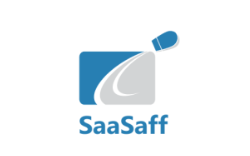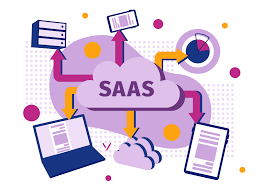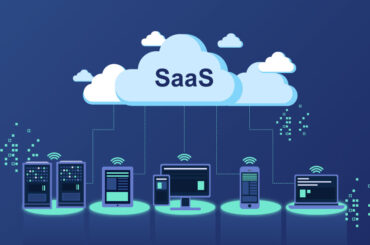In the ever-evolving landscape of technology, Software as a Service (SaaS) has emerged as a pivotal model, transforming how businesses and consumers access and utilize software.
This comprehensive guide delves deep into the realm of SaaS, offering insights into its workings, benefits, challenges, and future trends. Whether you’re a business leader contemplating the adoption of SaaS solutions or a curious observer of technological trends, this article provides a thorough understanding of SaaS, its impact, and its potential.
Introduction to SaaS
Software as a Service, commonly known as SaaS, is a software distribution model in which applications are hosted by a service provider and made available to customers over the internet.
This model has grown significantly from its early days, propelled by the advent of cloud computing. SaaS is distinguished by its subscription model, eliminating the need for organizations to install and run applications on their individual computing devices.
This shift not only simplifies software management but also reduces the upfront costs associated with purchasing software.
How SaaS Works
At its core, SaaS operates on a framework that relies on cloud hosting and multi-tenancy, allowing multiple users to access a shared application environment while ensuring data privacy and security.
Deployment models vary, including public, private, and hybrid cloud options, each offering different levels of security, scalability, and control. The pricing strategies of SaaS are equally flexible, with most providers offering monthly or annual subscriptions, pay-as-you-go models, and customized plans based on usage metrics.
Benefits of SaaS
SaaS offers a plethora of advantages over traditional software models. Its scalability and accessibility are unparalleled, enabling businesses to easily adjust their usage based on growth or changing needs.
The cost-effectiveness of SaaS is another significant benefit, as it removes the hefty initial investment in software licenses, in favor of a predictable subscription fee that includes maintenance, support, and automatic updates.
Moreover, SaaS facilitates enhanced collaboration and supports the modern workforce’s remote work preferences, thanks to its cloud-based nature.
Challenges and Considerations
Despite its advantages, SaaS is not without its challenges. Data security and privacy are major concerns for businesses, as sensitive information is stored off-premises. The potential for service disruptions and downtime also looms, alongside risks associated with vendor lock-in, which can limit flexibility and control.
Furthermore, integrating SaaS applications with existing on-premises systems can be complex and require additional investment.
SaaS vs. Traditional Software
Comparing SaaS with traditional on-premises software highlights the shift towards more flexible, scalable, and cost-effective computing solutions. Unlike traditional software that requires upfront purchase, installation, and maintenance, SaaS offers a more agile and less resource-intensive alternative.
However, businesses must carefully weigh these benefits against potential drawbacks such as ongoing subscription costs and less control over data security.
Key SaaS Technologies and Platforms
The backbone of SaaS includes technologies like virtualization and containerization, which enable the efficient deployment and scaling of applications. Popular SaaS applications and providers, such as Salesforce for customer relationship management, Microsoft 365 for productivity, and Google Workspace for collaboration, exemplify the diverse ecosystem of SaaS solutions available today.
Future Trends in SaaS
The future of SaaS is bright, with trends pointing towards the integration of artificial intelligence and machine learning to offer smarter, more intuitive applications. Vertical SaaS solutions, tailored to specific industries, are also on the rise, offering bespoke functionalities that address unique business needs.
Moreover, the use of data analytics and business intelligence within SaaS applications is set to expand, providing businesses with actionable insights to drive decision-making.
Best Practices for SaaS Adoption
To successfully adopt SaaS, businesses should conduct thorough vendor assessments to ensure alignment with their needs and compliance standards. Proper data migration and integration strategies are crucial, as is providing adequate training and support to users.
Regular reviews of SaaS subscriptions and services can help optimize expenditures and ensure that the solutions continue to meet business requirements.
Conclusion
Software as a Service has undeniably reshaped the software industry, offering a model that is scalable, cost-effective, and conducive to the modern digital economy.
As businesses and consumers increasingly embrace cloud computing, SaaS stands out as a key facilitator of this transition, promising not just enhanced efficiency and flexibility but also paving the way for innovations that will further transform our interaction with technology.
The journey of SaaS is far from complete, with new developments and trends constantly emerging, signaling an exciting future for this dynamic and pivotal technology model.





